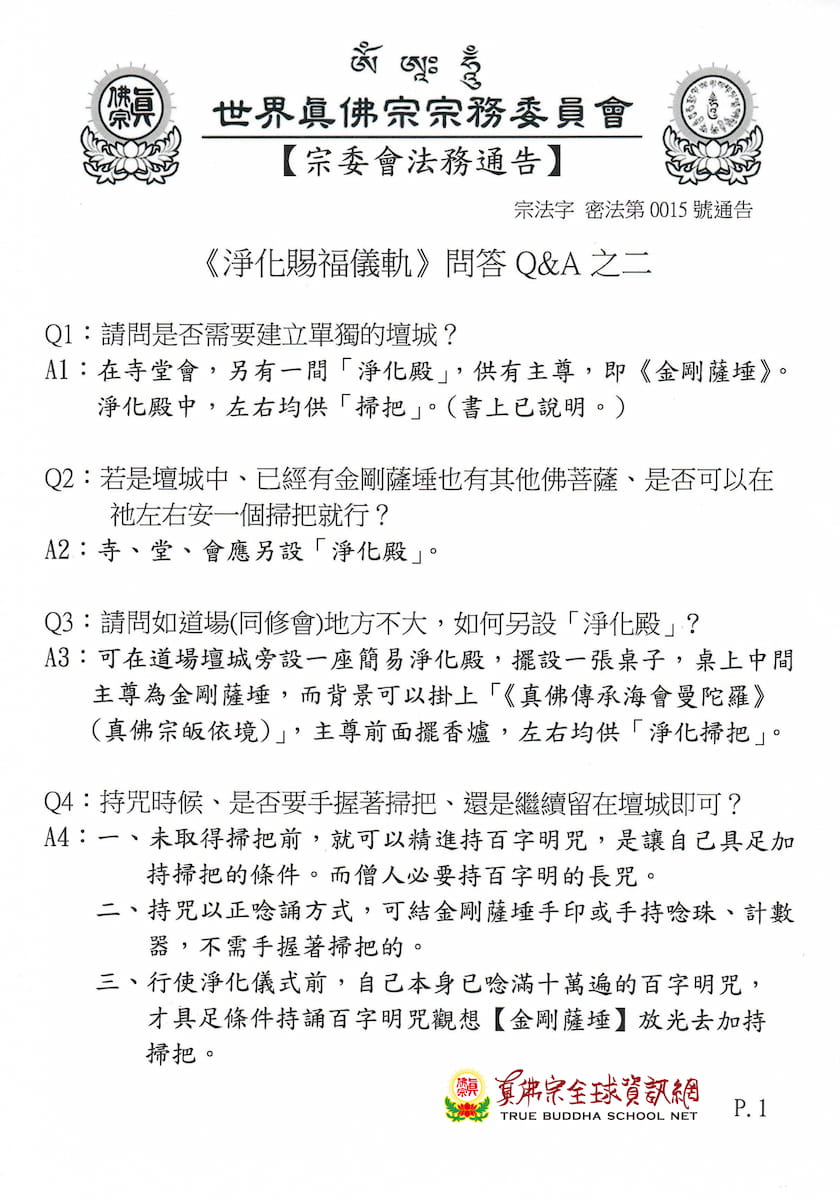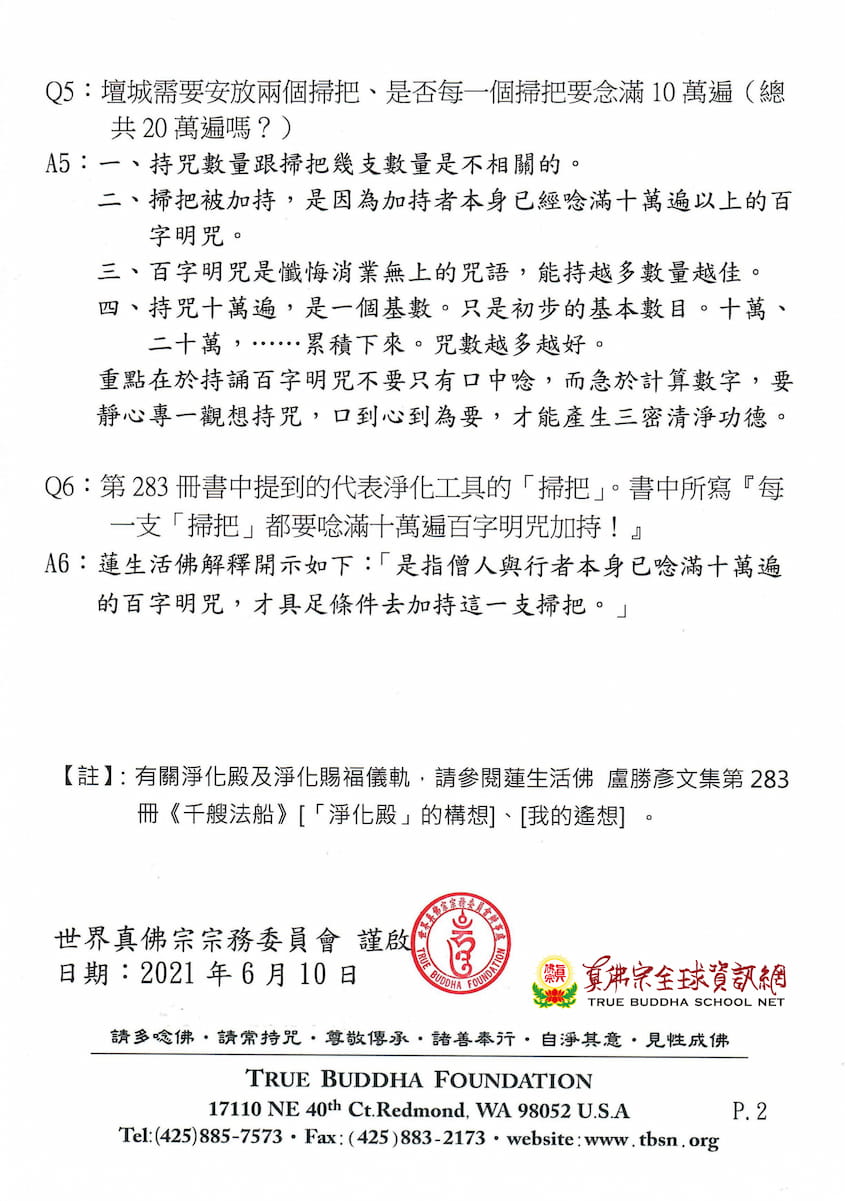Q1: Do I need to set up a separate altar?
A1: Within the cultivation venue, there should be a separate Purification Hall where Vajrasattva is enshrined as the principal deity. In the Purification Hall, brooms are provided on the left and right side of the deity. (This has been explained in the book.)
Q2: If Vajrasattva and other buddhas and bodhisattvas are already enshrined on the altar, can a broom be placed to the left and right side of Vajrasattva?
A2: Temples, chapters, and cultivation associations should establish a separate Purification Hall.
Q3: If a cultivation venue has limited space, how should the Purification Hall be set up?
A3: A simple Purification Hall can be established adjacent to the main shrine. A table should be set up with Vajrasattva in the center as the principal deity. As the background, one may hang a thangka or image of the True Buddha Lineage Assembly Mandala, aka the True Buddha School Refuge Tree. An incense burner should be placed in front of the statue of the principal deity and a purification broom should be placed on either side.
Q4: When reciting the mantra, should I hold the broom in my hand or leave it on the shrine?
A4:
Q5: Since two brooms are required in each shrine, does this mean each broom requires 100,000 recitations? (200,000 total recitations)
A5:
The key point of reciting the 100 Syllable Mantra is not rushing to finish the recitations. One must concentrate, visualize, and single-mindedly recite the mantra. In this way, one’s mind is united with one’s recitation and one generates the merit of purifying the three secrets.
Q6: Book 283 mentions that the purification implement is a broom. It also states that “Each broom must be blessed with 100,000 recitations of the 100 Syllable Mantra!"
A6: Living Buddha Lian-sheng explains as follows, "This means the condition for ordained Sangha and lay practitioners to bless the purification broom is to have recited the 100 Syllable Mantra 100,000 times."
Note: For more information about the Purification Hall and the Purification and Blessing Ritual, please reference “The Conception of the Purification Hall” and “My Vision of the Purification Hall” in Living Buddha Lian-sheng Sheng-yen Lu Book 283, Thousands of Dharma Vessels.
Best Regards,
True Buddha Foundation
June 10, 2021


